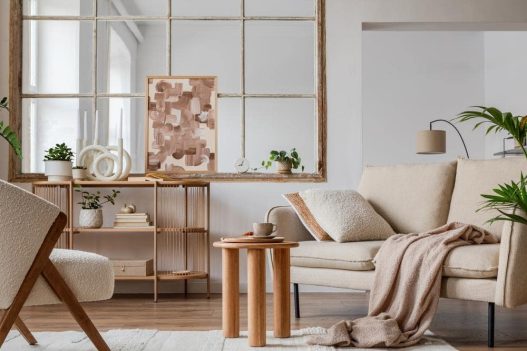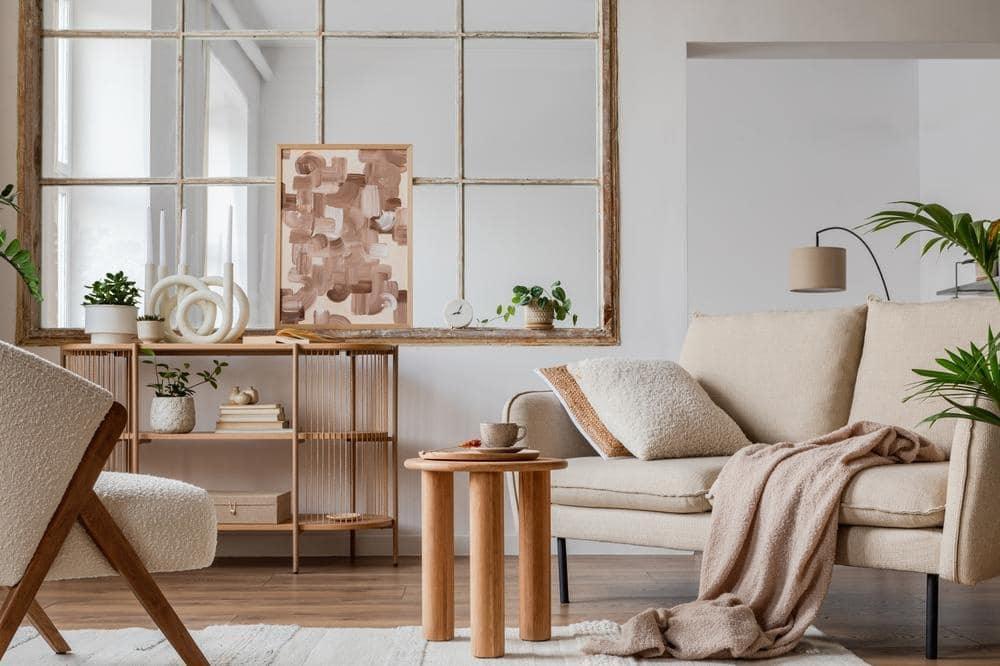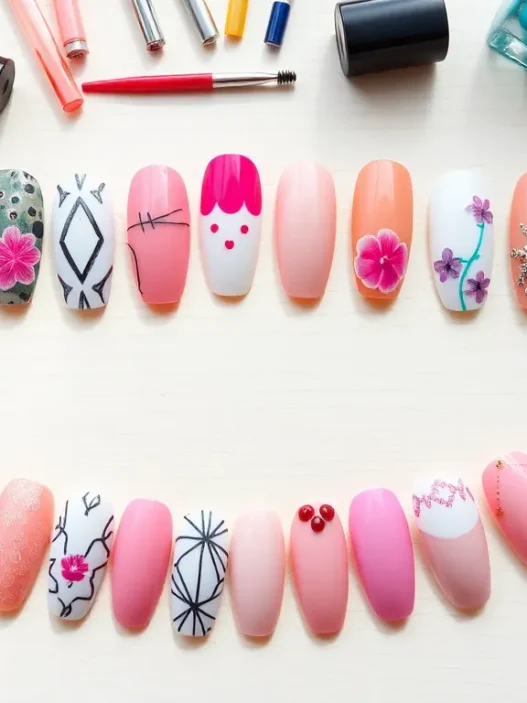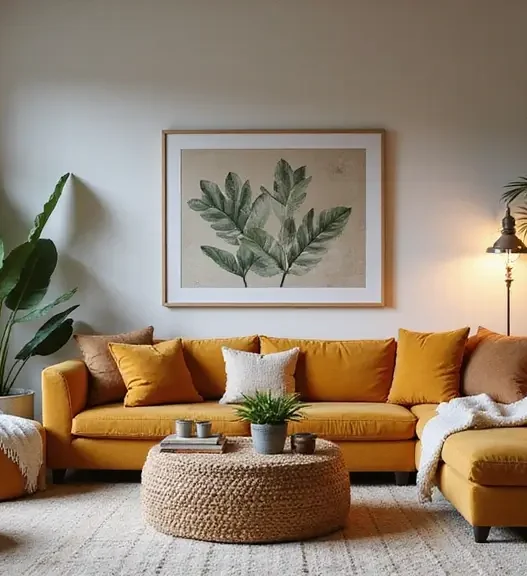Balancing Aesthetics and Comfort: Key Elements for a Cozy Living Room
Creating a living room that is both stylish and comfortable is a delicate balancing act that requires thoughtful consideration of various elements. The living room serves as the heart of the home, a place where family and friends gather, and where relaxation and entertainment coexist. Therefore, achieving a harmonious blend of aesthetics and comfort is essential. To begin with, selecting the right furniture is paramount. Opt for pieces that are not only visually appealing but also offer comfort and functionality. Sofas and chairs should have plush cushions and supportive structures, ensuring that they invite relaxation without compromising on style. Consider materials that are both durable and luxurious, such as leather or high-quality fabric, which can withstand daily use while maintaining their elegance.
In addition to furniture, the color palette plays a crucial role in setting the tone of the living room. Neutral tones such as beige, gray, and soft pastels create a calming atmosphere and provide a versatile backdrop for various decor styles. These colors can be complemented with bolder accents through throw pillows, rugs, or artwork, adding depth and personality to the space. Moreover, incorporating textures is another effective way to enhance both the aesthetic and tactile appeal of the room. Layering different materials, such as a woolen throw over a leather sofa or a silk cushion on a cotton armchair, can create a rich, inviting environment.
Lighting is another critical element that influences the ambiance of a living room. A combination of natural and artificial lighting can be used to create a warm and welcoming atmosphere. Large windows that allow ample natural light can be paired with strategically placed lamps and overhead fixtures to ensure the room is well-lit at all times. Dimmer switches can also be installed to adjust the lighting according to the mood or occasion, providing flexibility and enhancing comfort.
Furthermore, the layout of the living room should facilitate easy movement and conversation. Arranging furniture in a way that encourages interaction, such as positioning sofas and chairs to face each other, can make the space more inviting. It is also important to ensure that there is enough space to move around comfortably, avoiding clutter and overcrowding. This can be achieved by selecting multi-functional furniture, such as ottomans with storage or coffee tables with shelves, which help maintain a tidy and organized environment.
Incorporating personal touches is another way to balance aesthetics and comfort. Displaying family photos, cherished mementos, or artwork that resonates with the inhabitants can add warmth and character to the living room. These elements not only personalize the space but also create a sense of belonging and comfort.
Finally, plants can be a wonderful addition to a living room, bringing a touch of nature indoors. They not only enhance the visual appeal but also improve air quality and contribute to a sense of tranquility. Choosing low-maintenance plants, such as succulents or ferns, ensures that they remain a stress-free addition to the decor.
In conclusion, cultivating a stylish yet comfortable living space involves a careful selection of furniture, colors, textures, lighting, and personal elements. By thoughtfully integrating these components, one can create a living room that is both aesthetically pleasing and inviting, providing a perfect sanctuary for relaxation and socialization.
Incorporating Functional Furniture for a Chic and Relaxed Home
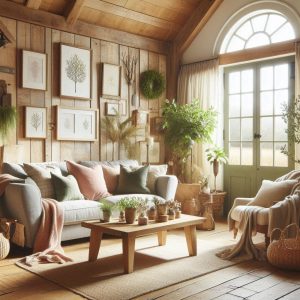
Creating a living space that is both stylish and comfortable is a goal many homeowners strive to achieve. The key to this balance lies in the thoughtful incorporation of functional furniture that not only serves its purpose but also enhances the aesthetic appeal of the home. To begin with, it is essential to consider the layout of the space. A well-planned layout can significantly influence the functionality and flow of a room. By arranging furniture in a way that facilitates movement and interaction, one can create an inviting atmosphere that encourages relaxation and socialization.
Transitioning from layout to furniture selection, it is important to choose pieces that offer both utility and style. Multi-functional furniture, such as a sofa bed or an extendable dining table, can be particularly beneficial in maximizing space without compromising on design. These versatile pieces allow for flexibility in usage, adapting to the changing needs of a household. Moreover, selecting furniture with clean lines and neutral tones can provide a timeless backdrop that complements various decor styles, making it easier to update the space with seasonal accents or personal touches.
In addition to multi-functional pieces, investing in high-quality materials is crucial for achieving a chic yet comfortable environment. Furniture made from durable materials such as solid wood, leather, or high-performance fabrics not only withstands the test of time but also adds a touch of elegance to the space. These materials often age gracefully, developing a patina that enhances their character and charm. Furthermore, incorporating natural elements like wood or stone can introduce warmth and texture, creating a cozy ambiance that invites relaxation.
As we consider the role of color and texture in a stylish and comfortable living space, it becomes evident that these elements play a significant part in setting the mood of a room. Soft, muted colors can create a serene atmosphere, while bold accents can add vibrancy and interest. Textures, on the other hand, contribute to the tactile experience of a space. By layering different textures, such as a plush rug, a knitted throw, or velvet cushions, one can add depth and dimension, making the room feel more inviting and lived-in.
Lighting is another critical aspect that should not be overlooked when designing a functional and stylish home. Proper lighting can enhance the overall ambiance and highlight key features of the space. Incorporating a mix of ambient, task, and accent lighting allows for versatility in creating different moods and settings. For instance, dimmable overhead lights can provide general illumination, while table lamps or floor lamps can offer focused lighting for reading or other activities. Accent lighting, such as wall sconces or LED strips, can be used to highlight artwork or architectural details, adding a layer of sophistication to the room.
Finally, personal touches are what truly make a living space feel like home. Incorporating elements that reflect one’s personality and interests, such as artwork, family photos, or travel souvenirs, can infuse the space with character and warmth. These personal items not only serve as conversation starters but also create a sense of belonging and comfort. By thoughtfully integrating functional furniture with aesthetic elements, one can cultivate a living space that is both stylish and comfortable, offering a sanctuary that meets the demands of modern living while reflecting individual taste and style.
Using Textures and Colors to Create a Stylish and Inviting Atmosphere
Creating a stylish yet comfortable living space is an art that balances aesthetics with functionality. One of the most effective ways to achieve this balance is through the strategic use of textures and colors. These elements can transform a room, making it both visually appealing and inviting. To begin with, understanding the role of color in interior design is crucial. Colors have the power to influence mood and perception, and selecting the right palette can set the tone for the entire space. For instance, soft, neutral tones such as beige, gray, and cream can create a calming and sophisticated atmosphere, while bold colors like deep blue or rich emerald can add a touch of drama and elegance.
Transitioning from color to texture, it is important to recognize how texture adds depth and interest to a room. Textures can be introduced through various materials such as fabrics, wood, metal, and stone. For example, a plush velvet sofa can add a sense of luxury and comfort, while a rustic wooden coffee table can bring warmth and character. By layering different textures, one can create a dynamic and engaging environment. This layering can be achieved by combining smooth and rough surfaces, shiny and matte finishes, or soft and hard materials. The key is to find a harmonious balance that enhances the overall aesthetic without overwhelming the senses.
Moreover, the interplay between color and texture can further enhance the ambiance of a living space. For instance, pairing a monochromatic color scheme with varied textures can prevent the room from feeling flat or monotonous. A white room, for example, can be brought to life with a mix of textures such as a woolen rug, a leather chair, and silk curtains. This combination not only adds visual interest but also invites tactile exploration, making the space more engaging and comfortable.
In addition to these elements, lighting plays a pivotal role in highlighting textures and colors. Proper lighting can accentuate the richness of textures and the vibrancy of colors, thereby enhancing the overall atmosphere. Natural light is ideal for showcasing the true colors and textures of materials, but when natural light is limited, strategically placed artificial lighting can achieve a similar effect. Consider using a mix of ambient, task, and accent lighting to create a well-lit and inviting space. For example, a statement chandelier can serve as a focal point, while table lamps and floor lamps can provide softer, more intimate lighting.
Furthermore, personal touches can elevate the style and comfort of a living space. Incorporating personal items such as artwork, photographs, or heirlooms can add character and make the space feel uniquely yours. These elements can also serve as conversation starters and reflect your personal taste and style. When selecting these items, consider how their colors and textures will interact with the existing design elements in the room.
In conclusion, cultivating a stylish yet comfortable living space requires thoughtful consideration of colors and textures. By carefully selecting and combining these elements, one can create an environment that is both aesthetically pleasing and inviting. The interplay of color, texture, and lighting, along with personal touches, can transform a living space into a sanctuary that reflects your personality and meets your needs for comfort and style.











